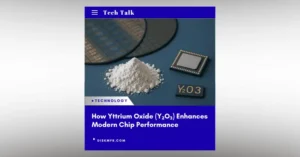Generally, in digital circles, there is no ambiguity when discussing “CPU” in terms of hardware. Whether in consumer-grade or commercial products, it typically refers to the processor, with the full English name “Central Processing Unit” and the abbreviation “CPU.”
However, the term “GPU” is different. Due to the evolving roles and functions of graphics cards in recent years, combined with the industry’s inconsistent use of “GPU,” it may now refer to various things, such as AI computing cards, graphics cards used in professional rendering, consumer-grade gaming graphics cards, or the graphics processor within these devices.
The full English term for “GPU” is “Graphic Processing Unit,” which translates to “图形处理器” in Chinese. The literal and most accurate meaning is the latter, while the other meanings are derivatives, as the GPU is the core of all these devices, playing a role and having characteristics similar to those of a CPU.
Editor’s Note: In the content that follows, “GPU” refers to the graphics processor itself. Readers should interpret accordingly to avoid confusion.
Although GPUs and CPUs share similar functions and properties, in reality, they are treated quite differently. The most significant difference lies in the design approach: CPUs are often not soldered onto the motherboard and use a socketed design, allowing users to freely replace and upgrade them.
GPUs, however, are different. Whether it’s a 2000-yuan entry-level graphics card or a mid-to-high-end card costing over 10,000 yuan, the GPU is always soldered directly onto the motherboard, making it impossible for ordinary users to “freely” replace it.
Of course, it’s not absolutely impossible to replace a GPU, but it requires specialized equipment and skills. Even then, it’s usually only possible to replace it with the same model, as different graphics cards often feature distinct designs for other components on the PCB, making them incompatible with each other.
Therefore, unlike a CPU, users cannot upgrade the GPU within a graphics card to improve its performance. The performance of a graphics card is a one-time deal.
If graphics card prices were very low, this would generally be acceptable. However, with graphics card prices on the rise, particularly for AI computing cards (with prices ranging from tens of thousands to hundreds of thousands), the limitation of not being able to replace or upgrade the GPU becomes increasingly frustrating for users.
For example, if the GPU within a commercial-grade AI computing card fails, it is unlikely that users would simply discard it and replace it with a new one, as is often done with consumer-grade graphics cards (given the high costs). Instead, they would choose to repair and replace the internal GPU. However, since the GPU is soldered onto the entire card, replacing it is challenging, time-consuming, and labor-intensive, potentially negatively impacting the normal operations of a data center.
Why go to such lengths to explain all this? Some astute readers may have already guessed: NVIDIA’s AI computing cards with a socketed, replaceable GPU design might be coming soon.
Recently, rumors suggest that NVIDIA is considering a CPU-like, socketed design for some of the Blackwell B300 GPUs, slated for release for enterprise-level AI computing users.
Such a design would offer numerous advantages. Take the situation mentioned above as an example:
If a commercial-grade AI computing card’s GPU fails and is designed with a socketed, replaceable GPU, users could simply remove the faulty GPU and replace it with a functional spare of the same model. This replacement process would take no more than ten minutes to restore the card to normal operation.
Additionally, in a situation where the GPU on the card is functional, but other PCB components have malfunctioned, preventing proper operation, a socketed design would allow users to quickly remove the working GPU and place it onto another working PCB of the same model. The malfunctioning PCB could then be sent for repair, minimizing the negative impact on a data center’s operations.
Furthermore, a socketed design for the GPU on commercial-grade computing cards would benefit downstream board manufacturers by simplifying production processes, increasing flexibility, and reducing costs, which would be advantageous for both manufacturers and end users.
However, NVIDIA would face significant challenges with this design. The foremost requirement is to ensure compatibility, allowing the same PCB model (or a few models) to support multiple GPUs. This would present certain difficulties and challenges. However, given NVIDIA’s limited range of AI computing card models, this would be relatively feasible.
Of course, for most general gaming and consumer-grade graphics card users, many may hope that future GPUs can adopt a socketed, replaceable design, allowing them to upgrade a card’s performance by simply swapping out the GPU without replacing the PCB.
Objectively, this is unlikely, as NVIDIA’s consumer-grade GPUs come in numerous models with substantial differences in parameters (such as memory width and capacity) and varying requirements for related components’ performance. Achieving full compatibility on a single PCB would be extremely challenging, and NVIDIA would be unlikely to pursue this approach.
However, disregarding costs and other factors, it would be technically possible. It would not require one PCB to be compatible with all models in a generation—just a socketed design allowing a PCB to support two or three adjacent GPU models with some upgrade potential.
Stay tuned for the latest updates and leaks on this topic, which will be shared as soon as they become available.
Related:
- Is Core i5 12400F Paired with RTX 4070 SUPER?
- Ryzen 5 7600X3D vs 7600X: Game Performance Tested
- 2024 GPU Market Revenue Surpasses $98.5 Billion Worldwide
- Why Is GPU Encoding Quality Worse Than CPU? Explained

Disclaimer:
- This channel does not make any representations or warranties regarding the availability, accuracy, timeliness, effectiveness, or completeness of any information posted. It hereby disclaims any liability or consequences arising from the use of the information.
- This channel is non-commercial and non-profit. The re-posted content does not signify endorsement of its views or responsibility for its authenticity. It does not intend to constitute any other guidance. This channel is not liable for any inaccuracies or errors in the re-posted or published information, directly or indirectly.
- Some data, materials, text, images, etc., used in this channel are sourced from the internet, and all reposts are duly credited to their sources. If you discover any work that infringes on your intellectual property rights or personal legal interests, please contact us, and we will promptly modify or remove it.








